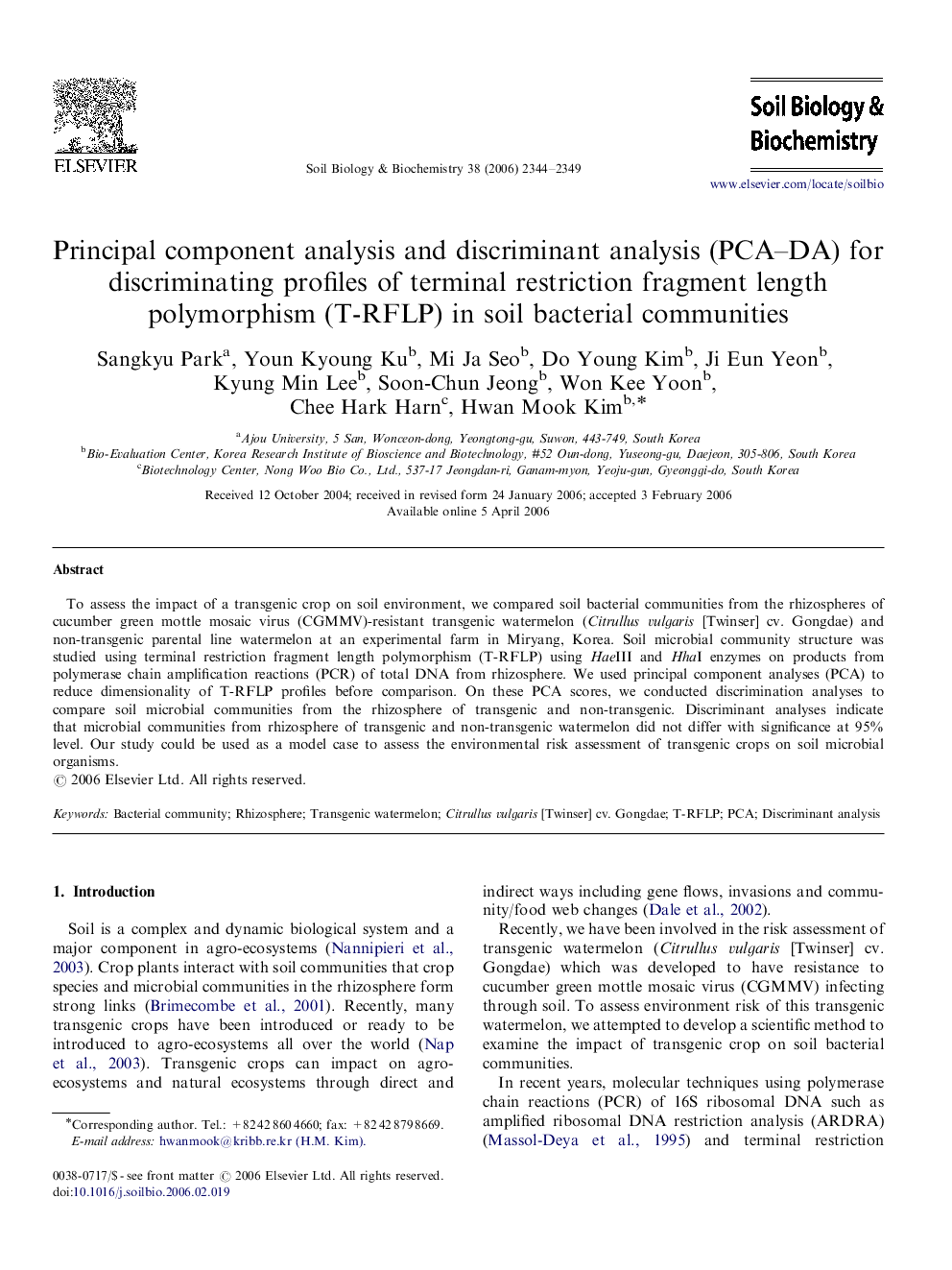| Article ID | Journal | Published Year | Pages | File Type |
|---|---|---|---|---|
| 2027201 | Soil Biology and Biochemistry | 2006 | 6 Pages |
To assess the impact of a transgenic crop on soil environment, we compared soil bacterial communities from the rhizospheres of cucumber green mottle mosaic virus (CGMMV)-resistant transgenic watermelon (Citrullus vulgaris [Twinser] cv. Gongdae) and non-transgenic parental line watermelon at an experimental farm in Miryang, Korea. Soil microbial community structure was studied using terminal restriction fragment length polymorphism (T-RFLP) using HaeIII and HhaI enzymes on products from polymerase chain amplification reactions (PCR) of total DNA from rhizosphere. We used principal component analyses (PCA) to reduce dimensionality of T-RFLP profiles before comparison. On these PCA scores, we conducted discrimination analyses to compare soil microbial communities from the rhizosphere of transgenic and non-transgenic. Discriminant analyses indicate that microbial communities from rhizosphere of transgenic and non-transgenic watermelon did not differ with significance at 95% level. Our study could be used as a model case to assess the environmental risk assessment of transgenic crops on soil microbial organisms.
